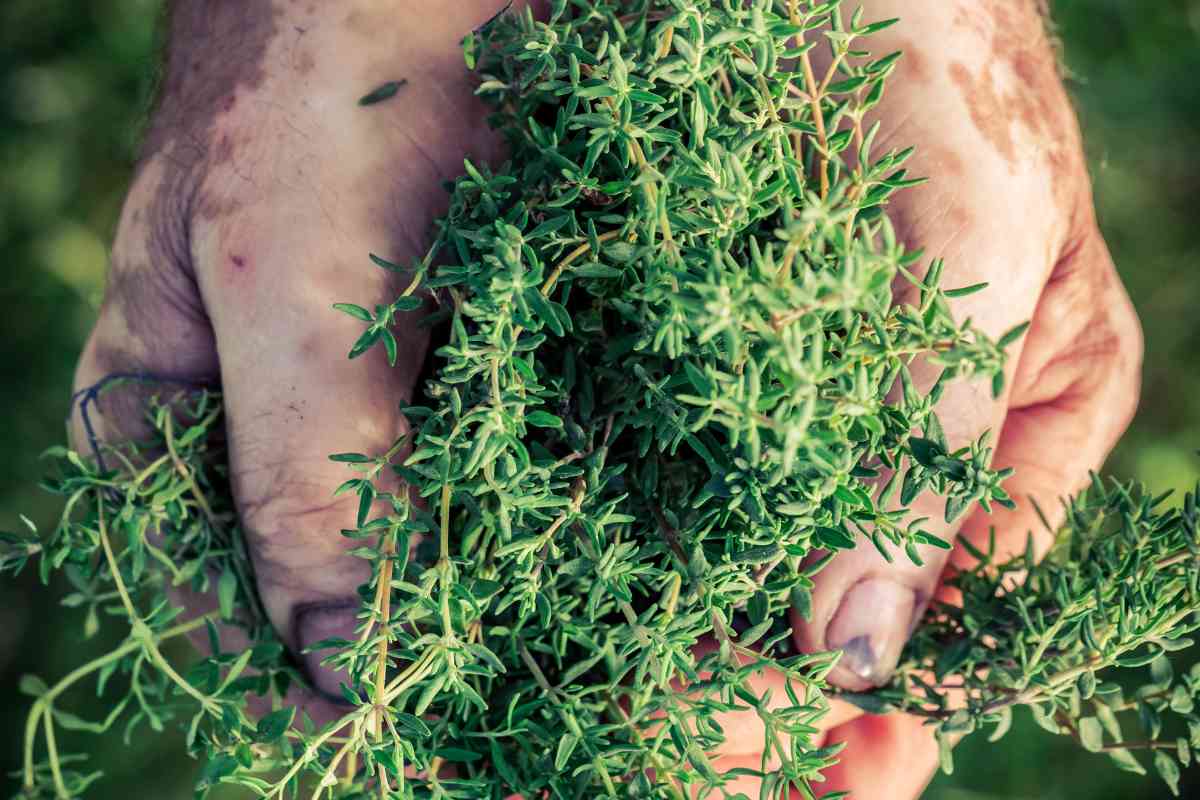Rosemary & Thyme: A Culinary Guide To Herb Gardening And Cooking

Table of Contents
Planting and Growing Rosemary & Thyme
Successfully cultivating these aromatic herbs is easier than you might think. With a little knowledge and care, you can enjoy a bountiful supply of rosemary and thyme throughout the growing season.
Choosing the Right Variety
Numerous rosemary and thyme cultivars exist, each with unique characteristics. Consider your climate and preferred uses when making your selection. For example, prostrate rosemary thrives in warmer climates and spreads beautifully as ground cover, while upright rosemary varieties are ideal for containers or borders. Similarly, lemon thyme offers a bright citrusy note, while common thyme provides a classic earthy flavor.
- Sunlight: Rosemary and thyme need at least 6-8 hours of direct sunlight daily for optimal growth.
- Soil: Well-draining soil is crucial; these herbs dislike soggy conditions. Amend heavy clay soils with compost or perlite to improve drainage.
- Propagation: Both rosemary and thyme can be propagated from seeds or cuttings. Cuttings are generally easier and faster for established plants.
- Spacing: Allow adequate spacing between plants to prevent overcrowding and ensure good air circulation, reducing the risk of disease. For rosemary, allow 2-3 feet between plants, while thyme can be spaced closer at 12-18 inches.
- Pests and Diseases: Rosemary and thyme are relatively pest-resistant, but watch out for aphids and spider mites. Good air circulation and healthy plants are your best defense.
Essential Gardening Tips for Success
Regular watering, especially during dry spells, is vital, but avoid overwatering, which can lead to root rot. Fertilize sparingly; too much fertilizer can negatively impact flavor. Pruning encourages bushier growth and prevents legginess. Prune after flowering to maintain shape and promote new growth. Seasonal considerations include winter protection in colder climates (mulching or bringing potted plants indoors) and regular harvesting throughout the growing season.
Harvesting and Preserving Rosemary & Thyme
Harvesting at the right time maximizes flavor and aroma. Proper preservation techniques ensure you can enjoy your herbs year-round.
Knowing When to Harvest
The ideal time to harvest is just before the plants begin to flower. At this stage, the essential oils are at their peak concentration, resulting in the most intense flavor.
- Harvesting Methods: Snip sprigs or stems as needed for fresh use, or harvest larger quantities for drying or freezing. For drying, cut back larger stems.
- Drying: Air drying is a simple method; bundle sprigs and hang them upside down in a cool, dark, and well-ventilated area. A dehydrator provides faster drying and more consistent results.
- Freezing: Chop fresh herbs and freeze them in ice cube trays with water or oil for easy portioning and use in recipes.
- Herb-Infused Oils and Vinegars: Infuse olive oil or vinegar with fresh rosemary and thyme sprigs for a flavorful addition to your cooking.
Storage Techniques for Maximum Flavor Retention
Proper storage is key to preserving the quality of your harvested herbs. Dried herbs should be stored in airtight containers in a cool, dark, and dry place. Frozen herbs maintain freshness for several months. Herb-infused oils and vinegars should be stored in airtight containers in a cool, dark place.
Culinary Uses of Rosemary & Thyme
Rosemary and thyme add depth and complexity to a wide array of dishes.
Rosemary Recipes & Pairings
Rosemary's piney, slightly camphoraceous flavor complements many savory dishes.
- Rosemary's Flavor Profile: Piney, slightly camphoraceous, slightly bitter.
- Best Food Pairings: Lamb, chicken, potatoes, roasted vegetables.
- Recipes: Roasted rosemary potatoes, rosemary lamb roast, rosemary chicken with lemon.
Thyme Recipes & Pairings
Thyme's earthy, slightly lemony notes enhance both simple and sophisticated dishes.
- Thyme's Flavor Profile: Earthy, slightly lemony, slightly peppery.
- Best Food Pairings: Roasted vegetables, poultry, fish, soups, stews.
- Recipes: Roasted chicken with thyme and lemon, thyme-infused roasted vegetables, classic French onion soup.
Combining Rosemary and Thyme
The combined power of rosemary and thyme creates a harmonious blend of flavors. Experiment with adding both herbs to roasted meats, soups, stews, and casseroles for an enhanced culinary experience. A simple combination of both herbs in olive oil can be brushed on roasted vegetables or used as a marinade.
Conclusion
Growing your own rosemary and thyme is a rewarding experience that brings the freshness of the garden directly to your kitchen. From the simple pleasure of tending your herbs to the culinary creativity they inspire, the benefits are numerous: fresher flavor, cost savings, and the satisfaction of creating delicious meals with homegrown ingredients. Start your culinary herb garden adventure with rosemary and thyme today! Discover the joy of growing your own rosemary and thyme for delicious cooking!

Featured Posts
-
 How To Achieve The Good Life A Step By Step Plan
May 31, 2025
How To Achieve The Good Life A Step By Step Plan
May 31, 2025 -
 Rosemary And Thyme Growing Harvesting And Preserving Your Herbs
May 31, 2025
Rosemary And Thyme Growing Harvesting And Preserving Your Herbs
May 31, 2025 -
 Building The Good Life A Blueprint For Success
May 31, 2025
Building The Good Life A Blueprint For Success
May 31, 2025 -
 Investigation How Corporate Targets Affect Uk Pet Owners Veterinary Bills
May 31, 2025
Investigation How Corporate Targets Affect Uk Pet Owners Veterinary Bills
May 31, 2025 -
 Chat Gpt Maker Open Ai Investigated By The Ftc
May 31, 2025
Chat Gpt Maker Open Ai Investigated By The Ftc
May 31, 2025
